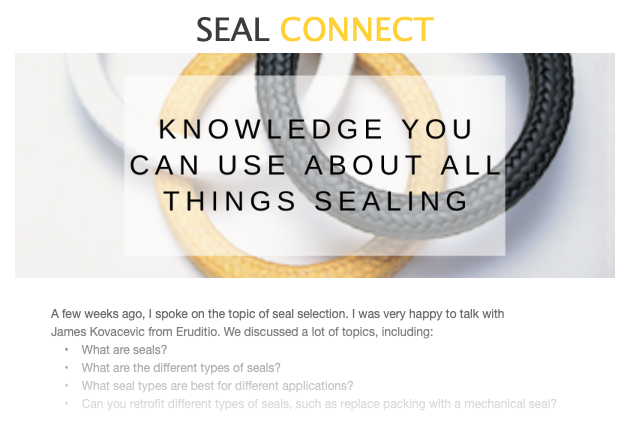What Sealing Solution is Right for Your Rotating Equipment
 Deciding on the right sealing solution for your rotating equipment involves considering several factors to ensure reliability, efficiency, and cost-effectiveness. The choice between mechanical seals and packing, or even selecting among various types of mechanical seals, depends on the specific application requirements, operating conditions, and maintenance capabilities. Here’s a structured approach to making that decision:
Deciding on the right sealing solution for your rotating equipment involves considering several factors to ensure reliability, efficiency, and cost-effectiveness. The choice between mechanical seals and packing, or even selecting among various types of mechanical seals, depends on the specific application requirements, operating conditions, and maintenance capabilities. Here’s a structured approach to making that decision:
- Understand the Application
- Fluid Handled: The nature of the fluid (abrasive, corrosive, hazardous, etc.) significantly influences the seal selection. Mechanical seals are often preferred for hazardous and corrosive fluids due to their better containment capabilities.
- Operating Conditions: Pressure, temperature, and speed of the equipment dictate the seal type. High-pressure and high-temperature applications may require more robust mechanical seals with specific design features.
- Equipment Design: The design and condition of the equipment, including shaft size, space around the shaft, and vibration levels, can limit your sealing options.
- Evaluate Performance Requirements
- Reliability and Leakage Tolerance: For applications where leakage could be hazardous or costly, mechanical seals are typically the better choice. If some leakage is tolerable and cost is a significant concern, packing might be sufficient.
- Life Cycle Costs: Consider not only the initial cost but also the maintenance, downtime, and operational costs over the seal’s life. While more expensive upfront, mechanical seals often offer lower life cycle costs for many applications.
- Maintenance and Operational Capabilities: If your facility lacks the expertise to maintain mechanical seals, packing might be a more practical choice despite its higher maintenance needs. However, training and investing in mechanical seal technology can pay off in the long run.
- Consider Environmental and Safety Regulations
- Emissions and Environmental Concerns: Stricter environmental regulations regarding emissions and leakage may necessitate the use of mechanical seals, especially dual seal systems that offer zero or near-zero leakage.
- Safety Requirements: The safety of personnel and the environment should be a priority. Hazardous fluids often require mechanical seals to minimize exposure and risk.
- Consult with Experts
- Manufacturers and Suppliers: Engage with seal manufacturers or suppliers to discuss your application. They can offer valuable insights into the most suitable sealing solutions based on their experience and product range.
- Industry Best Practices: Look into industry standards (such as API for the oil and gas industry) and best practices for guidance on seal selection.
- Review and Decide
- Cost-Benefit Analysis: Perform a cost-benefit analysis considering all the factors mentioned. This analysis should include not just the initial cost but also maintenance, operational efficiency, safety, and compliance costs.
- Trial and Evaluation: If possible, trial a selected seal type in your operation to evaluate its performance before making a broader commitment.
Choosing the right sealing solution requires a comprehensive understanding of your application’s specific needs, a thorough evaluation of different sealing options, and often, a consultation with experts. By carefully considering these factors, you can select a sealing solution that ensures optimal performance, safety, and cost-effectiveness for your rotating equipment.
 SEAL CONNECT
SEAL CONNECT Find Your Sealing Solution
Find Your Sealing Solution